
Interview with Carl Marchisotto of Nola speakers
By Marc Silver · June 22, 2021
The following is an edited interview I had with him over the phone. I hope you find it as interesting and informative as I did.
Q: When did you first become interested in speaker design and audio in general?
Carl Marchisotto: When I was in high school and built my first speaker. I was about 15 or 16, many years ago. You know I still own the first amplifier I ever bought and it still works. My father helped me build the enclosures. They were 12 cubic foot bass reflex, there were two of them for stereo. It was a different time. We had more flexibility regarding acceptable speaker enclosure size.
Q: I understand you worked for Fairchild Defense in the 1970s. What did you do there?
Carl Marchisotto: It was the early 70s and I was working for the defense industry at Airborne Instruments on Long Island and ITT Avionics in New Jersey. But I wanted to get into audio, which is what I really loved. I wasn’t really interested in the military industry.
Q: I know your lovely wife Marilyn is very involved in the company. How did you get together?
Carl Marchisotto: We met in college, often the way people meet. We just hit it off and I wouldn’t give her up for anything. She’s amazing. We’ve been married for 52 years. She is Vice President and 50% owner of Nola.
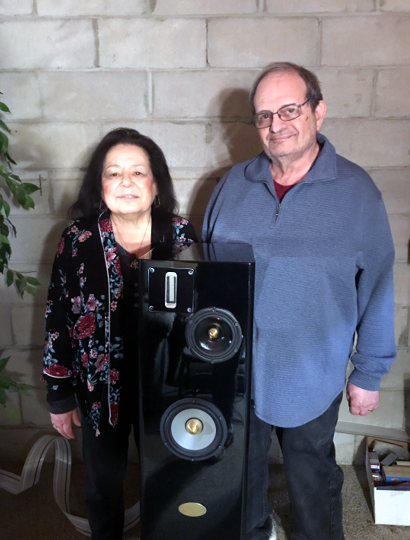
Q: When did you graduate from City College?
Carl Marchisotto: I graduated from City College in 1967, then went on for my masters at NYU.
Q: I did a little digging and discovered you and Marilyn started a company back in 1971 called All Test Devices. Will you elaborate on that?
Carl Marchisotto: When I was at Fairchild Defense, I met an engineer who had a friend that owned Manny’s Music Store in New York City. The word got back to us that Gibson Guitars was looking for a device that would make a guitarist sound like Santana. So I designed a device called a Sustainer that would sustain the guitar notes and we were able to sell it to Gibson who then put their name on it. We formed All Test Devices so we could manufacture it, and left Fairchild. We also started making other sound modifying devices after that. One thing about Marilyn that is very rare is that she believed in me (I don’t know why) and the other is she was a woman that could take a risk. Many women would not want their husband to leave a good paying job and to start some little company making gadgets for another company. But she has that faith in me and is very strong, and at that time with a baby no less. Many times, I would be working late and she would be alone at home with the baby. She is an ideal mate, not too many women would put up with that.
Q: You joined Dahlquist in 1976. How did this come about?
Carl Marchisotto: How it came about is I wasn’t totally thrilled with the music industry either. It was better than defense, but still my love was audio and making things that sound more like real music, whereas the music industry was more into sound effects. I remember going to a HiFi show in Manhattan, I forget the name of the hotel, and Jon was there with Saul before they started Dahlquist. So I talked to them and I was very impressed with the prototype they demonstrated, which became the DQ-10. I listened to every speaker at the show and thought their speaker sounded more like the real deal. So I put that in the back of my mind. Later on, one of the products I made at All Test Devices was a phono pre-amp and Jon got wind of it. He was impressed. To make a long story short, he wanted to branch out into electronics, and then made me an offer to join Dahlquist.
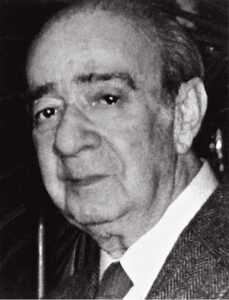
Saul Marantz
Q: What was it like working for Jon Dahlquist and Saul Marantz?
Carl Marchisotto: I was with them for 15 years. It was a very interesting time. I met a lot of amazing people while working there. I had a lot of freedom to be creative in developing products.
Q: I remember visiting Jon and Saul back when they were working with Magnat of Germany. I understand you were responsible for design and engineering for the DQ-10 upgrades, the DQ-8, DQ-12, DQ-20 and DQ-20i. How were you involved with the DQ-M9?
Carl Marchisotto: I designed the DQ-M9, DQ-M9C, DQ-M7, DQ-M5. Later on, I designed a new series of enclosure systems, the M909, M907 and M905. Then eventually I designed the open baffle models: the DQ-12, the DQ-8 and then the DQ-20 and DQ-20i. They were vertical arrays instead of the horizontal array as in the DQ-10.
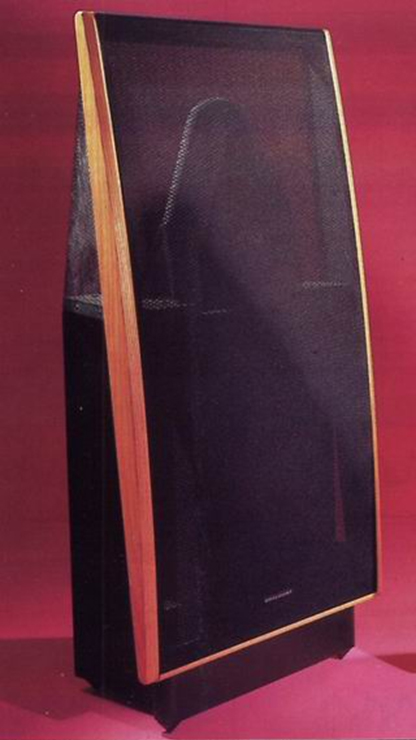
Dahlquist DQ-20
Q: I remember they were also experimenting with the Ionovac design.
Carl Marchisotto: I got the chance to demonstrate that at a couple of shows. However, we then discovered the pitfalls of that design, such as the amount of ozone it generated. Also, Jon decided to get rid of the horn and make it omni-directional. But then the design needed much more power because it didn’t have the horn loading any more. In some ways it sounded more open, but it generated even more ozone than the original design with the horn. With all the problems of the design, we decided to drop it. It did a lot of bad things to the environment. It did sound amazing though. Its transients were amazing — the sound of bells for instance.
Q: You received your Masters in Electrical Engineering at NYU in 1970. Is that when you were promoted to VP of Engineering at Dahlquist?
Carl Marchisotto: No, at that time I was working for ITT Avionics in New Jersey and that was before I joined Dahlquist. I joined Dahlquist in ’76.
Q: What can you tell me about the final years of Dahlquist? I assume you had already started Alon. You left Dahlquist before that.
Carl Marchisotto: What happened is that Jon was in a massive car accident. I don’t know how he survived. He wasn’t wearing his seat belt and it was a convertible with top down. He was thrown out of the car and he hit a brick wall. He was in a coma for 12 days and he never fully recovered. So his family stepped in at that time and they decided to sell Dahlquist. They sold it to some people that worked at HarmanKardon. I left after a couple of months working under the new owners — mostly some mid-fi people. Later it was sold again to a Canadian company.
Q: Talking about Alon. You headed Alon (also known as Acarian Systems Ltd.) for 14 years starting in 1991. I know it was a very successful line of speakers. What happened that made you leave?
Carl Marchisotto: Marilyn and I started Acarian Systems. We then decided to make the cabinet maker a partner in Acarian. However, partners can be very difficult to get along with. Our partner became more of a problem as time went on and we found out he was basically stealing money from the company. It got to a point that it was no longer tolerable. So that was 2004. I stuck it out for a long time. He offered a factory in order to build loudspeakers, and I had to train them to build cabinets and cross-overs and for that we gave him 50% of the company. For 50% of the company, we figured he would behave himself, but he didn’t and he was more out for himself and it just got to be unworkable. So we left Acarian in 2004 and then started Accent Speaker Technology (Nola). It is a family business and there are no outside partners. I find it is a much better atmosphere for creativity since you are not fighting with anybody because they have a different idea, or they are competing with you, or there’s something else going on. But with a family thing, if you have arguments, they are still family. Anyway, the partner in Alon ended up suing us for 10 years because we left. But eventually we won the lawsuit and we have the rights to the name and the designs.
Q: As many of my readers are aware, Nola has become one of the most renowned and respected High End speaker manufacturers over the years. Would you like to elaborate on your success with the line?
Carl Marchisotto: One of the things that is different about Nola is that I decide about the product. I design it, I listen to it, I listen to every part of it and so I can work with things here in ways that I never could in a corporate structure. One of the reasons I left Dahlquist is, when it was sold, the guy that ran the company was an accountant. He told me here is a tweeter. It costs $7 and this is what you have to use in all the models. I said that this in not going to work. First off, it wasn’t a very good tweeter and I didn’t like it. How are you going to tell an engineer that he has to use a $7 tweeter and expect you are going to have a high-end product at the same time? The new owners had the impression that if they bought the name Dahlquist, they also bought the Dahlquist distribution. This is not true. They thought they could just run it. High End is a very unique industry where you have to develop a product that is commensurate to what other people produce and what dealers expect. They didn’t figure that was important at all, which is why I didn’t get along with the new company. It’s hard to get people to understand what High End audio is all about. It would be as if Chevrolet took over Ferrari — it wouldn’t be the same product anymore! It’s not the same industry culture. Now at Nola, I don’t have that situation. If I decide to build a ribbon tweeter, I don’t have to convince anybody. But when the project is done and I demonstrate it, my credibility has to do with what it sounds like. I have free range and that is good for creativity. It gets back to the old story, as far as product development is concerned, there remains a great deal of art in this industry. It is not just technology. If it was just technology, then the corporate people would be just fine. There is a large amount of art in developing speakers and corporations just don’t understand that. So I feel more comfortable developing product here than at any company I have ever worked for.
Q: There are many variants in crossover design. Do you have your own take that makes your speakers distinct?
Carl Marchisotto: First of all, in my view, the speaker design determines the appropriate crossover topology design. To decide this, I use a great deal of listening along with many years of experience. The goal is to produce a complete speaker, regardless of price, that achieves the sound that Nola is known for. This may require the use of a one-capacitor crossover board in one model, all the way to seven separate hand-wired crossover boards in another model. That is not to say that the entry level Boxer is equal to the 4-tower Grand Reference, but that the Boxer still reveals some of the sonic cues of “live music.” Some of my practices that are not implemented within standard corporate structures are: I listen to individual crossover components before they are installed in a production crossover to check quality. We use only hand-wired crossover construction with low loss and not inferior printed circuit boards (with their very thin conductors) for crossovers in all models. There are no fuses or other current limiting devices used in either the crossovers or loudspeakers. Crossover boards are isolated from vibration to reduce coloration. We use only lead-free silver solder for all connections in all models.
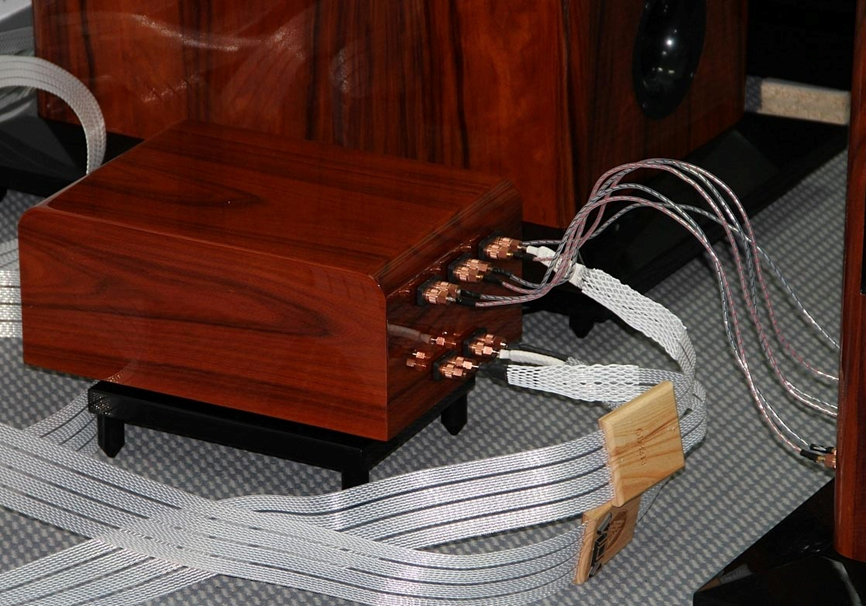
Nola Grand Reference crossover
Q: Staying with speaker design. Most of your speaker designs are open baffle. My understanding is there were open baffle designs back as far as the 50s and maybe before, but I think the Dahlquist DQ-10 was the first practical speaker design using an open baffle concept. Do you want to expand on why?
Carl Marchisotto: Open baffle woofers have large problems, and are just not as practical. So for dynamic systems the woofer is in an enclosure and the open baffle really starts with the mid-range on up. So the DQ-10 was the first practical and recognized component open baffle dynamic speaker. I am not talking about planar designs like electrostats and ribbons,
Q: And you became a big proponent of the open baffle dynamic speaker design?
Carl Marchisotto: Yes, I liked it. Jon made it for practicality reasons. Unlike me, Jon had a philosophy that he felt almost anything could work, I have a philosophy that only what I like works. So we were completely different in that sense. But I respected him and he respected me. One of the things that made the DQ-10 outstanding was that the little mid-bass driver was open baffle and that made the design, in my opinion, outstanding. And it turned out that it was the only way he could make the design work. He really wanted to put the mid-bass driver in a little box, but every time he did that it destroyed the sound. Eventually he figured it out and gave up and put it on a little baffle. It’s kind of interesting sometimes that things work out in unexpected ways. But if you listen, have a good ear and an open mind, you won’t be fooled. So when one of his ideas didn’t work, he adapted. And to me that dipole mid-bass made all the difference, and sounded more like “live music” than a constrained system in a box.
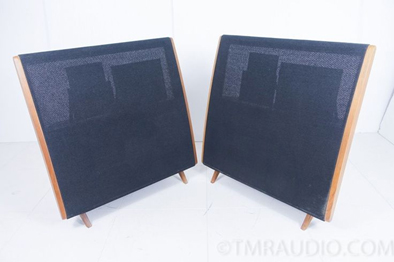
Dahlquist DQ-10
Q: You have been getting stellar reviews of your speakers for nearly three decades now. You are probably best known for your ultra-high-end speakers like the Grand Reference, but you have also received recognition for your far more affordable speakers like the Boxer and more recently the Brio. Are you planning anymore speakers in that vein?
Carl Marchisotto: The problem that I have is when I was at Alon we made an open-baffle speaker called the Alon 1. They started out at $1,200 per pair. It was a three-way open-baffle speaker with grilles and all that goes with it. In those days you could actually make that design for a very reasonable price. Today there is no way I can touch making something like that at anywhere near that price. I would love to make a $2,000 floor standing open-baffle speaker, but it is just impossible. People don’t understand that building an open-baffle speaker is inherently more expensive than building a box speaker. A box speaker has fewer parts, which leads to lower cost production and much reduced labor costs. It is not the best way to go, but it’s much less expensive.
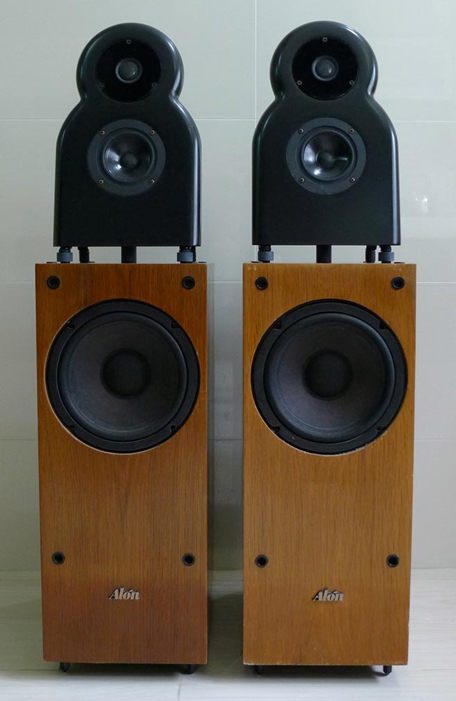
Alon I without grill
The Brio was my idea of coming out with an open baffle design for $3,500. With our design of a very good powered sub-woofer that we produce, we made a full range open baffle system that didn’t cost a fortune. And it is user friendly and wife friendly because the satellites are small. So it did a lot of things that at least checked some boxes. But that’s the only way I could bring a more cost effective open baffle system to market in 2020. It is a whole different world price-wise than what we ran into in 1990.
Q: I remember how good the first Boxer was. Now you are on version III of the Boxer. What have you done with that over the years?
Carl Marchisotto: The Boxer S2, a couple of years back at RMAF, won a Best Sound Award, which is an honor for a speaker that is only $3,500 a pair; just a pair of those, no sub-woofer or anything, driven by really good electronics. I prefer tubes, and that combination actually impressed me because it wasn’t even close to our best effort. Yet it was recognized as very musical and a lot of people liked it. What’s interesting to me is you can never judge what people are going to like. People formed an affinity for the Boxer from the first time we delivered them in 2009, and still to the present, to music lovers worldwide. I’m not going to change them too much; I do upgrade them but the basic design will stay the same. I’m not going to fool with success because people like them, and I like them.
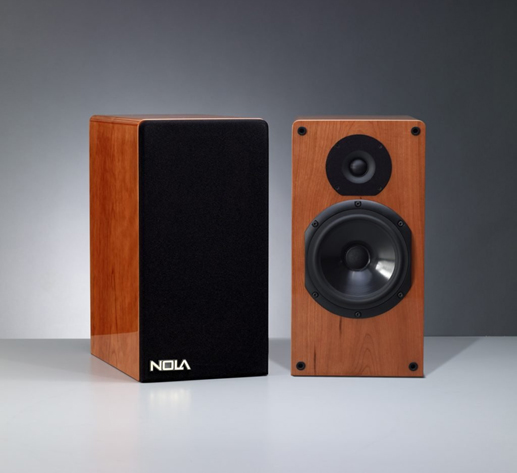
Nola Boxer
Q: Carl it’s been fabulous chatting with you and I have one final question. Are you ever going to retire?
Carl Marchisotto: I’m probably going to have to at some point. I don’t want to. I don’t know, but it would be nice if I can get somebody to buy this company, where I can operate in some sort of advisory capacity or something like that. I am undecided. That’s a good question, I’ll have to think about that.
I hope you enjoyed this conversation. If you have any questions, comments or recommendations for other articles, please send me an email to marcs@sonic.net
Nola Speakers
1511 Lincoln Avenue
Holbrook, NY 11741
Voice: (631) 738-2540
Fax: (631) 738-2542
nolaspeakers.com
Copy editor: Dan Rubin